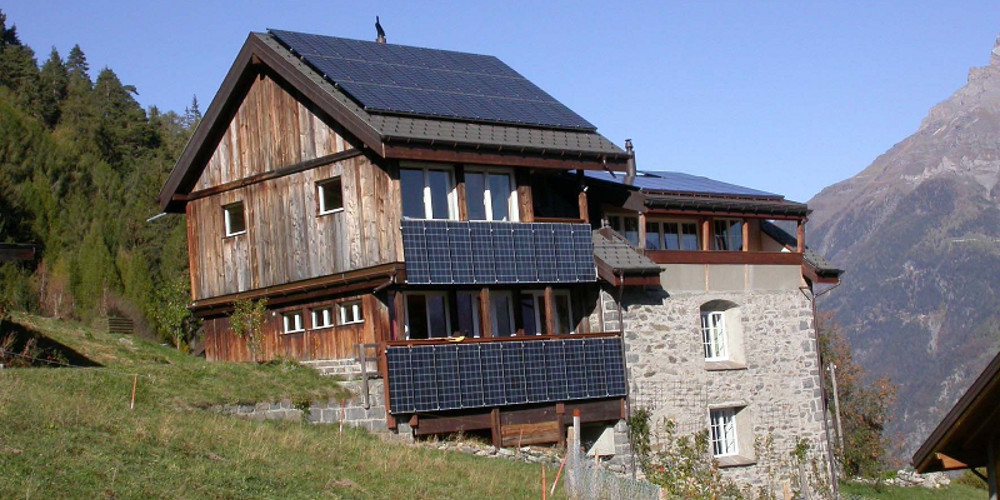The Swiss Federal Council published the Energy Strategy 2050 regulations which were approved in a referendum held on 21 May. The legislative changes will officially enter into force at the beginning of 2018. The association Swissolar hopes these new rules will further support the expansion of solar in the country. The basis for this is the long-awaited implementing provisions on the amendments to the law, which the Federal Council has now published.
According to Swissolar, there are major changes for PV. Of great importance are the simplified rules for the creation of self-consumption communities. So now the combination of several parcels for the common use of self-generated solar power is possible. This increases self-consumption rates, which increases profitability. The Swiss solar association believes that the many owners of multi-family houses as well as commercial buildings will take advantage of these changes.
With optimized self-consumption, part of the solar power must be fed into the public grid. According to Swissolar, the reimbursement of this electricity must be based on the costs of purchasing third parties and the production costs of its own production facility. This was an improvement of the current regime, where the cost of purchasing from third parties and thus, in most cases, the spot market price, was decisive. The new tariffs should then be about seven to eight cents per kilowatt hour, which significantly improves the efficiency of the photovoltaic systems, the association continues.
Also welcomed is the future design of solar subsidies. Thus, the previous upper limit for the one-off payment of 30 kilowatts is repealed. It is thus available for all photovoltaic systems up to 50 megawatts. The rebate covers about 30 percent of the investment costs of the systems. In combination with optimized self-consumption, many of the almost 38,000 photovoltaic projects on the waiting list for cost-covering feed-in tariffs (KEV) could be realized with this funding, as Swissolar expects. The KEV would then be paid only to projects that were registered before mid-2012.
With these new measures, the association expects the Swiss photovoltaic market to surpass the threshold of 300 megawatts of newly installed capacity next year. In 2016, the market shrank 20 percent year-on-year due to uncertain conditions. For the current year, Swissolar expects a slight recovery, but without specifying concrete figures.
This content is protected by copyright and may not be reused. If you want to cooperate with us and would like to reuse some of our content, please contact: editors@pv-magazine.com.




By submitting this form you agree to pv magazine using your data for the purposes of publishing your comment.
Your personal data will only be disclosed or otherwise transmitted to third parties for the purposes of spam filtering or if this is necessary for technical maintenance of the website. Any other transfer to third parties will not take place unless this is justified on the basis of applicable data protection regulations or if pv magazine is legally obliged to do so.
You may revoke this consent at any time with effect for the future, in which case your personal data will be deleted immediately. Otherwise, your data will be deleted if pv magazine has processed your request or the purpose of data storage is fulfilled.
Further information on data privacy can be found in our Data Protection Policy.